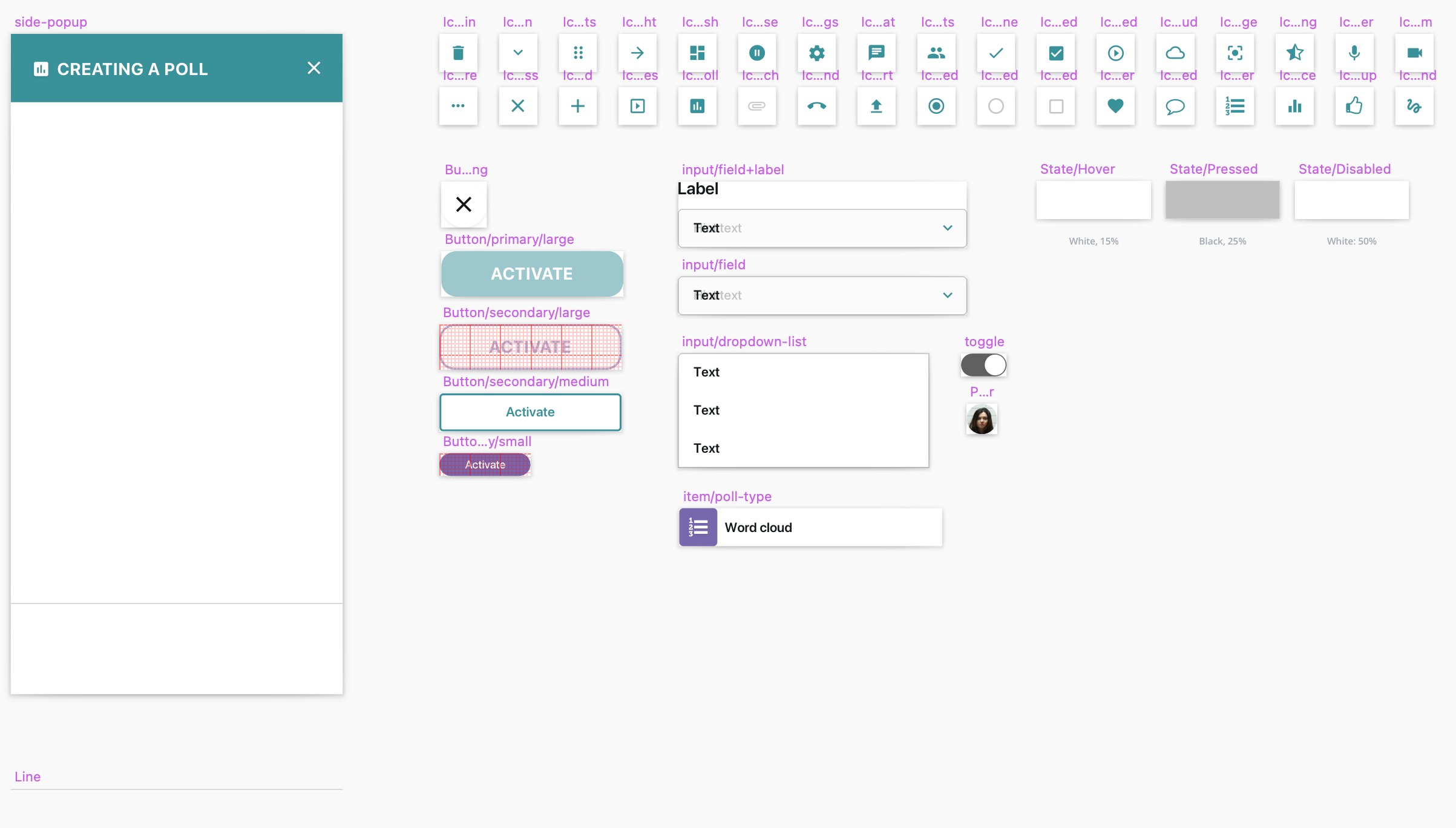The number of online learners in the US are nearing 7,5 M with 99% of schools using online-learning systems. We are now in the remote communication era, and tools are adopting more real-world features to make online education smooth and effective. My client struggled with low engagement during live online sessions. I was requested to design a feature for live polling in an e-learning tool.
A live poll allows presenter to interact with participants in real-time by asking questions and collecting instant feedback. Bearing timeframe in mind I chose desk research approach for this assignment.
User segments:
– Presenter professor, speaker (Presentation Tool, University, Course, Number of Classes, Number of Students);
– Participant student, audience (Device, Presence)
To get user insights I analysed online materials where teachers share key aspects of online class and usage of live polls. I formulated professors' jobs:
– As a professor I want to boost engagement so that I keep students active and attentive during sessions.
– As a professor I want to check understanding in order to quickly assess if students are following the material.
– As a professor I want to encourage participation in order to give every student a voice, even in large or remote settings.
– As a professor I want to drive discussion so that results can be used to spark dialogue or explore different viewpoints.
– As a professor I want to collect feedback so that I can adjust my teaching based on responses.
Using Value Proposition Canvas I mapped out gains and pains to understand user needs.
I analysed online tools that use live polls to build the functional scope of the feature:
– Cisco Webex Meeting
– Blackboard Collaborate
– Zoom Meeting
– Poll Everywhere
– Socrative https://socrative.com/
– Mentimeter https://www.mentimeter.com/
– Slido (integrated with G.Slides or PowerPoint)
– Kahoot! https://www.youtube.com/watch?v=64WeFl7UOq8
– Polly (for Microsoft Teams, Google Hangouts https://www.polly.ai/hangouts) https://www.polly.ai/microsoft-teams
– Polles (for Google Slides)
For I mainly used open sources, including reading help articles, watching instructional videos and analysing recorded online classes.
– Slido articles
– Live Polling in Instruction By Samantha Harlow, Online Learning Librarian
– Poll Everywhere case studies https://www.polleverywhere.com/
– Webex Help Center https://help.webex.com/en-us/nhqovwv/Poll-Attendees-in-Cisco-Webex-Training
– Polling in Blackboard https://www.youtube.com/watch?v=mK7390n-VN0, https://help.blackboard.com/Collaborate/Ultra/Moderator/Moderate_Sessions/Polling
– Zoom Polling for meetings https://support.zoom.us/hc/en-us/articles/213756303-Polling-for-Meetings
This is a simple user flow that covers main user (professor) path to create a poll and share results, it does not include edge cases.
For the tool I went with design language that is clean, human-centered, and emotionally engaging, built around simplicity and inclusivity, contributing to sustainable goal of accessible learning for everyone.
Main view when holding an online lecture with a new feature highlighted in the side menu.
Solution explained with click through:



This user study took a relatively short time, a week-long research & design process. I defined the problem from the task and proposed solution for user interaction with live polles. Using Value Proposition Canvas and competitors analysis I summed up expectations and needs that potential customers might have.
Design deliverables included:
1) user flow
2) visual moodboard for inspiration
3) design library and screens in Sketch
4) pototype in InVision
Retrospectively, I would add transitions/animations to results for energy and engagement, as well as offered keyboard navigation and mobile responsiveness.